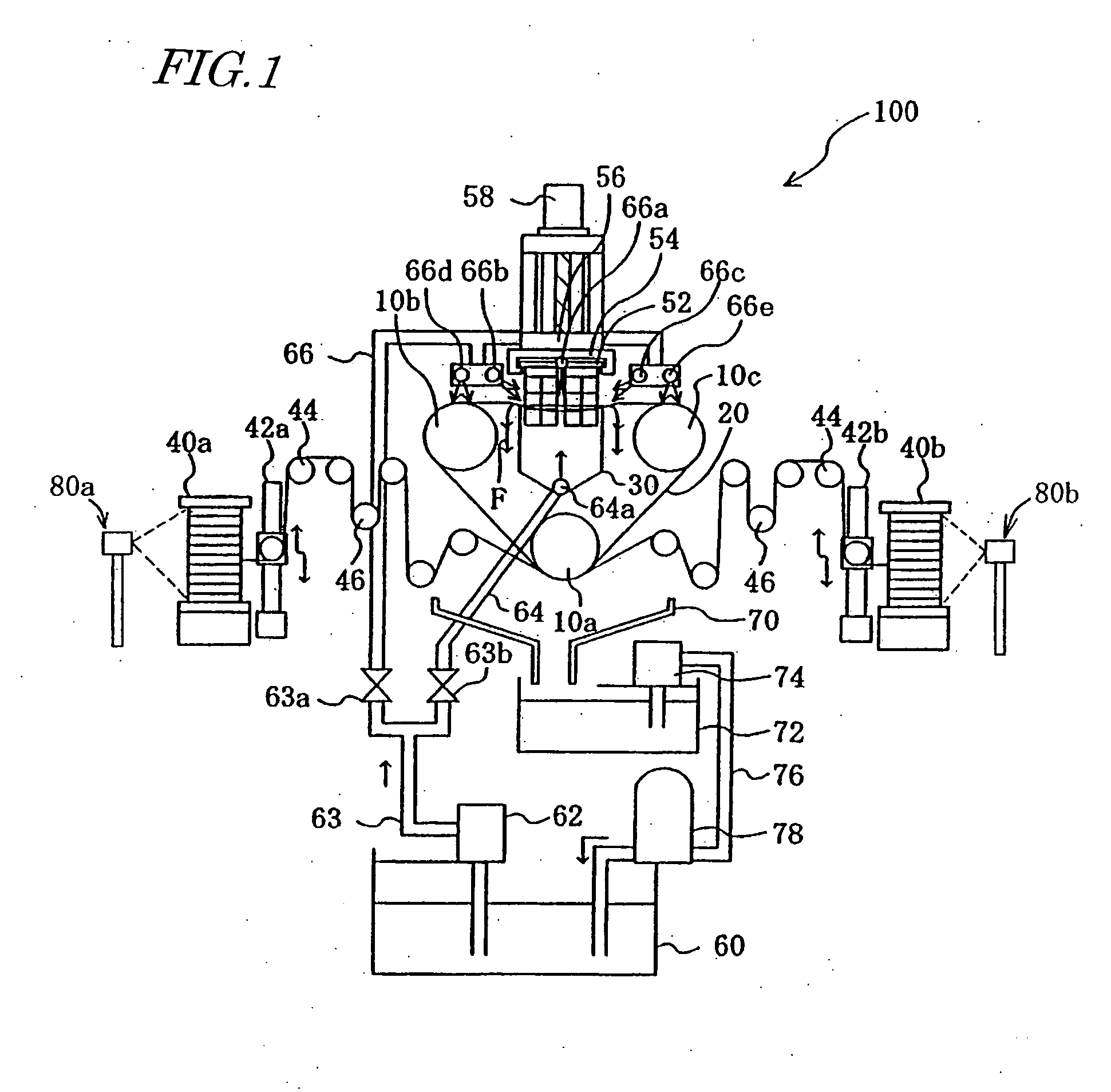Cutting method using wire saw, wire saw device, and method of manufacturing rare-earth magnet
- Summary
- Abstract
- Description
- Claims
- Application Information
AI Technical Summary
Benefits of technology
Problems solved by technology
Method used
Image
Examples
Embodiment Construction
[0067] Hereinafter, a cutting method according to a preferred embodiment of the present invention will be described in further detail with reference to the accompanying drawings. In the following preferred embodiment, a method of cutting a neodymium magnet sintered body to make the neodymium magnet mentioned above will be described.
[0068] A method for producing a neodymium (Nd--Fe--B) sintered magnet will be described briefly. It should be noted that a method of making a rare-earth alloy as a magnet material is disclosed in detail in the U.S. Pat. Nos. 4,770,723 and 4,792,368 identified above, for example.
[0069] First, material metals are exactly weighed to a predetermined mixture ratio and then melted in a high-frequency melting crucible within a vacuum or an argon gas atmosphere. The molten material metals are then poured into a water-cooled casting mold, thereby obtaining a material alloy with a predetermined composition. Then, this material alloy is pulverized to make a fine pow...
PUM
| Property | Measurement | Unit |
|---|---|---|
| Fraction | aaaaa | aaaaa |
| Fraction | aaaaa | aaaaa |
| Force | aaaaa | aaaaa |
Abstract
Description
Claims
Application Information
 Login to View More
Login to View More - R&D
- Intellectual Property
- Life Sciences
- Materials
- Tech Scout
- Unparalleled Data Quality
- Higher Quality Content
- 60% Fewer Hallucinations
Browse by: Latest US Patents, China's latest patents, Technical Efficacy Thesaurus, Application Domain, Technology Topic, Popular Technical Reports.
© 2025 PatSnap. All rights reserved.Legal|Privacy policy|Modern Slavery Act Transparency Statement|Sitemap|About US| Contact US: help@patsnap.com



